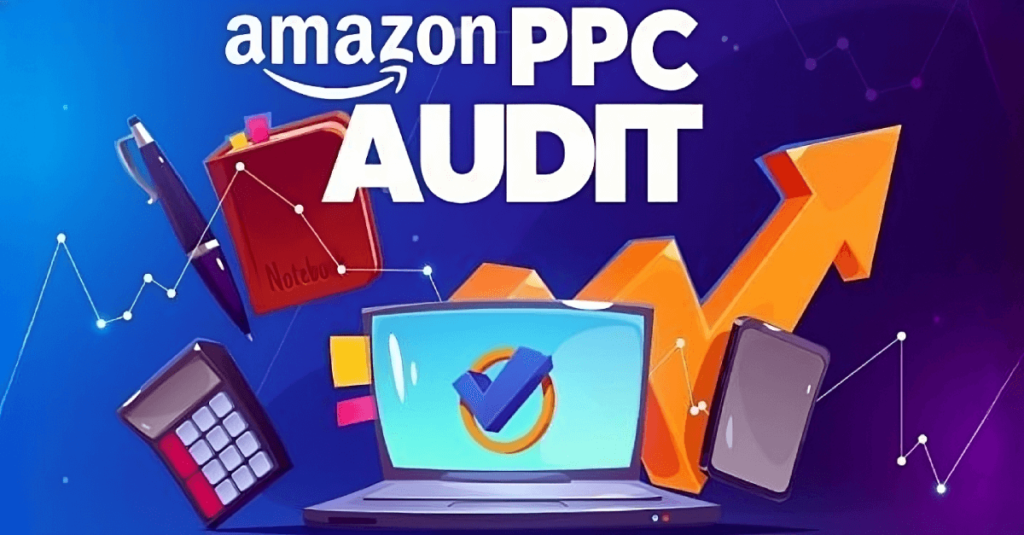What is an Amazon PPC Audit?
An Amazon PPC (Pay-Per-Click) audit refers to an in-depth evaluation of an Amazon account’s PPC advertising campaigns and the key factors affecting their performance.
The purpose of this audit is to identify areas for improvement, optimize campaigns for better performance, and increase the return on investment for the advertiser or a potential client.
Benefits of Conducting a PPC Audit
An Amazon PPC audit involves an in-depth review of an advertiser’s Amazon advertising account, including the structure of campaigns, keywords, product targeting, bidding strategies, ad copy, creative, and performance metrics such as impressions, clicks, conversions, and cost per acquisition.
The results of an Amazon PPC audit can be used to make informed decisions about how to optimize ad campaigns for better performance, reduce advertising costs, and drive more sales and revenue. Audits can be performed by in-house teams or by external experts in the field of Amazon.
Amazon PPC Audit Checklist
Now for the most awaited part, making a checklist for a PPC audit helps you to perform all the mandatory steps before reaching a conclusion. Also, it makes you confident about your audit and helps you in making better decisions.
Every PPC expert in the industry applies their own PPC audit approach in which steps to perform first and which to perform at the end. But we will try to provide you with a general approach that is pretty standard yet unique in its own way to help you understand and perform the Amazon PPC audit.
Following are the steps that potentially make an Amazon PPC audit checklist:
1. Campaign Structure Review
Reviewing the campaign structure involves analyzing the Amazon Advertising account to ensure that campaigns, ad groups, keywords, and product targeting ASINs are organized in a logical and efficient way.
For example, some of the most common practices these days is having one ad group in one campaign, in which the whole campaign is created for a specific goal.
Some signs of bad campaign structures are:
- Having too many ad groups in a single campaign.
- Having too many keywords in one ad group.
- High & Low search volume keywords in the same ad group or campaign.
- One keyword was targeted twice for the same (Exact) match type in different campaigns.
- No negative keyword targeting in campaigns, except campaigns or ad groups having exact match types.
2. Campaign Performance Review
Reviewing campaign performance includes monitoring key performance metrics from the advertising console such as click-through rate (CTR), conversion rate(CVR), and advertising cost of sales (ACOS) to identify any areas of the campaign that may be underperforming.
The standard CTR is 1% and even if there are variations, CTR must not be below 0.5%. Similarly, the standard CVR is 10%, but it must not be below 5%. This also includes identifying any trends or patterns that may indicate areas for improvement.
3. Analyzing the Bidding Strategies
This step includes checking for the proper use of automatic and manual bidding. Manual bids are normally used, as automatic bids are sometimes too high. We’ll check if the bids are too high or too low.
We will analyze if the bids for particular keywords are optimized for the campaign goals or not. For example, if a keyword is running in an exact match type and performing well having a good CTR and CVR, its bid must be optimized.
We will check the bidding history of non-performing keywords as well, and check if their bids were changed and if that change affected their performance or not.
4. Campaign Budget Review
This includes checking the campaign budget and ensuring it is allocated effectively. If the campaign is performing with good CTR, CVR, and ACOS but goes out of budget because of a low campaign budget, we will make recommendations to increase the budget.
Similarly, if a campaign is allocated a good budget, but it’s not performing very well, then the budget is getting wasted and we will make recommendations to decrease the budget.
5. Analyzing Search Term Report
In this step, we will analyze the search term report to identify any irrelevant or low-performing keywords and make adjustments accordingly. We will suggest putting the search terms in negative that are performing poorly.
Similarly, we will recommend running the search terms that are performing well into exact match campaigns, while creating a PPC funnel.
6. Analyzing the use of Negative Targeting
Negative targeting of keywords and ASINs is usually associated with broad & phrase match type campaigns. We will check if the keywords and ASINs running in exact match-type campaigns are added to the negative list for broad and phrase match-type campaigns or not.
This also includes reviewing the search term report and ensuring that the low-performing customer search terms are added in negative keyword targeting or not. We will include the suggestions in our report after reviewing them.
7. Review Ad Copy and Images
First thing first, we will analyze the images to ensure that they are relevant, clear, engaging, and high-quality images. This also includes checking for proper use of keywords in the title and clear calls to action. In short, both images and titles must be optimized and tested.
If the images are not convincing, we will recommend a change if the PPC campaigns are not performing well. If they are performing well, then we will suggest a test to check whether the sales increase or not.
8. Product Listing Review
Product listing review includes checking the product listing and ensuring that it is optimized or not. We will perform a keyword analysis and check if our highly relevant keywords and the keywords running in PPC campaigns are included in the title, bullet points, and description.
9. Use of Ad Features
This step involves reviewing the use of Amazon’s various ad types, such as Sponsored Products, Sponsored Brands, and Sponsored Display ads, to ensure that they are being used in the most effective way.
If any of the ad formats are yet to be tried out, we will definitely recommend exploring that ad format so that the remaining opportunity could be grabbed as well.
10. Analyze Market Competition
This step involves reviewing the competitors to see how they are approaching their Amazon PPC campaigns and identifying opportunities to gain an edge.
This includes analyzing the competitor’s images, title, organic ranks, and sponsored keywords’ ad placements, as well as reviewing their product offerings and pricing strategies.
11. Trends & Market Analysis
At this step, we will provide insights about the industry, market trends, and how the campaigns can be adapted to stay ahead of the competition.
For example, if you are analyzing in Q2 and the previous data tells you that the sales & demand will touch peak in Q4, you can predict that there will be a high PPC spend in Q4.
12. Account History Review
This step includes reviewing the account history and identifying any recurring issues or patterns and providing recommendations to address them.
13. Use of A/B Testing
We will analyze if A/B testing is used in the account to optimize ad copy, images, and landing pages to ensure that the account holder is taking advantage of Amazon’s A/B testing capabilities.
14. Recommendations
Based on the findings from the above steps, we will conclude with actionable recommendations for improving the Amazon PPC campaigns.
This may include suggestions for reorganizing the account structure, adjusting bid strategies, optimizing listing and images, and analyzing the competition.
Maximize Success with a PPC Audit Today!
It is crucial to regularly review and audit your PPC campaigns to ensure that your advertising budget is being spent effectively and opportunities for growth are not being missed.
However, the e-commerce industry is constantly evolving. So, what are you waiting for? Get your PPC audit done today!
Our goal is to assist sellers worldwide in developing a successful Amazon business. We hope that you found this information useful for your business.

